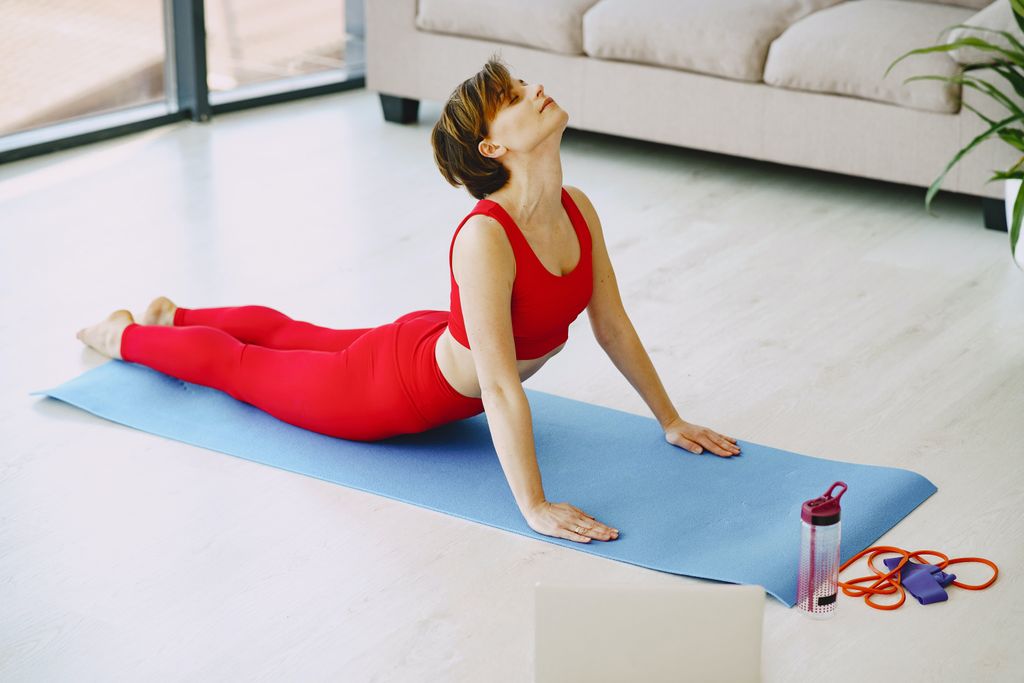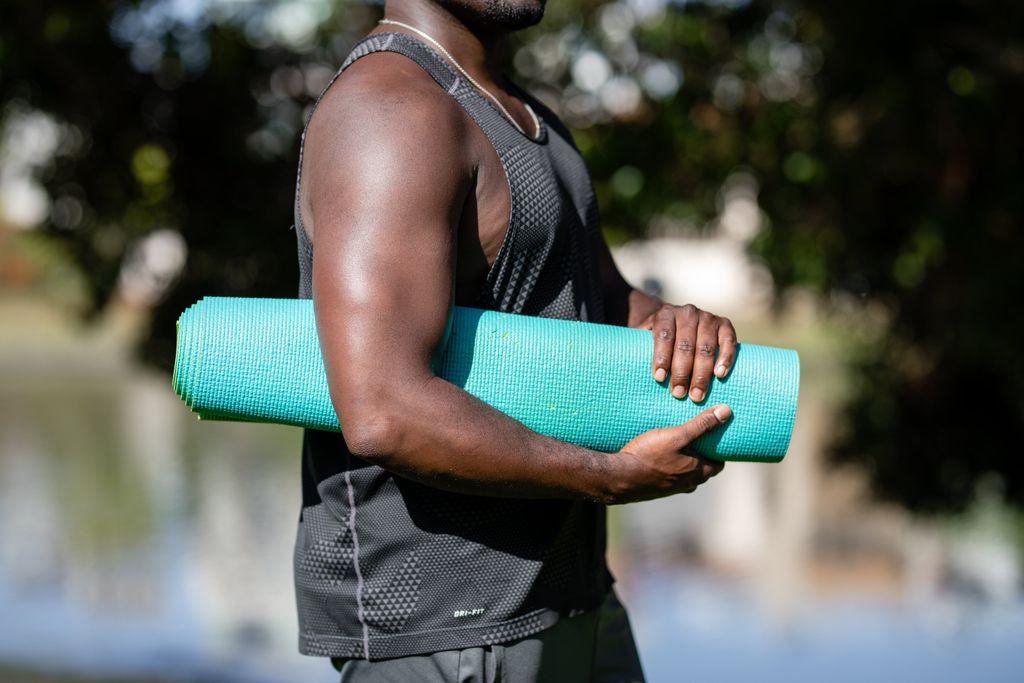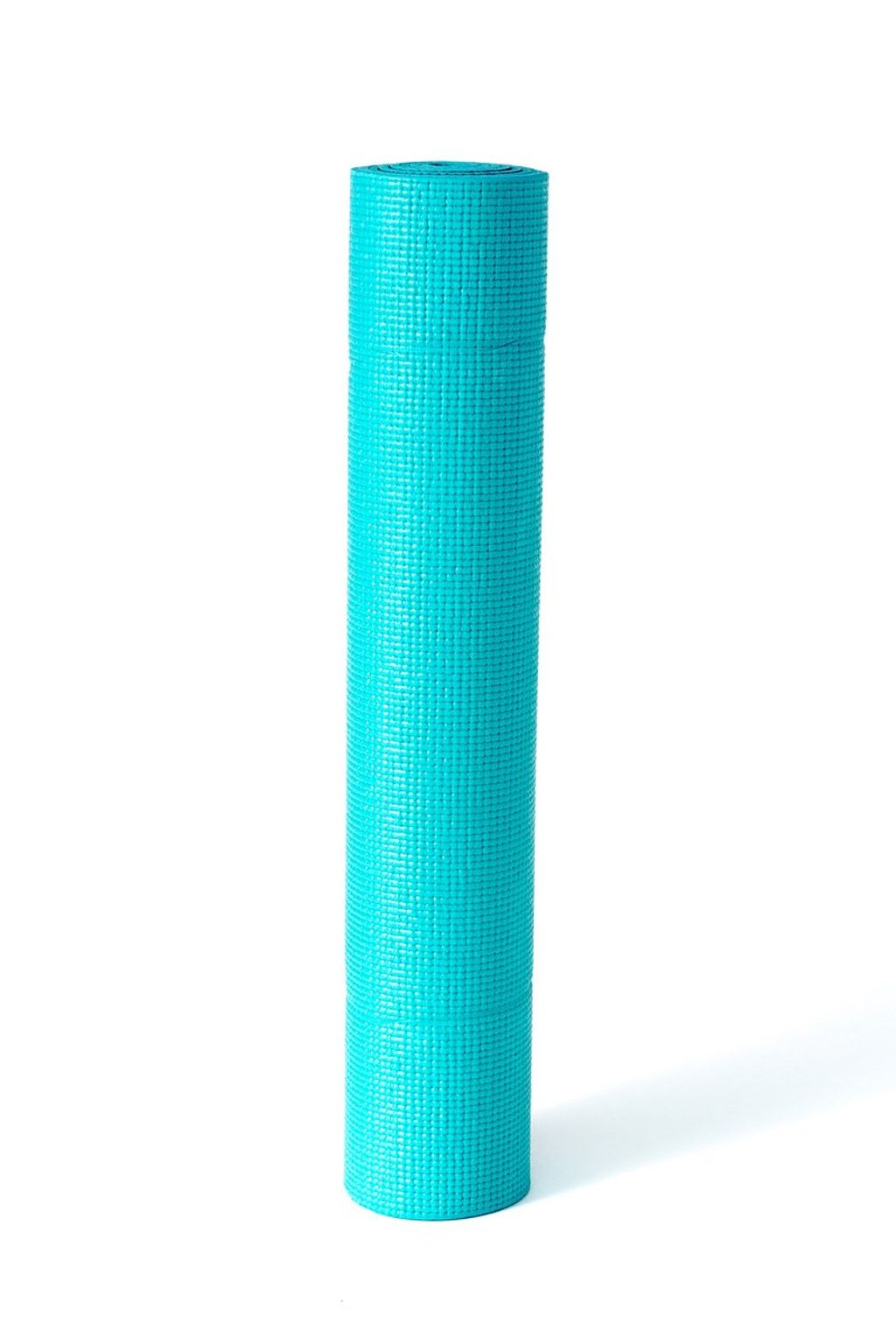
The Ultimate Guide to Choosing an Extra Thick Yoga Mat
Choosing the right yoga mat is essential for a comfortable and effective practice. If you're looking for extra cushioning and support, an extra thick yoga mat may be the perfect choice for you. In this ultimate guide, we will explore the benefits of extra thick yoga mats, who should use them, factors to consider when choosing one, different types available, features to look for, how to choose the right thickness, and maintenance tips. By the end, you'll have all the information you need to select the best extra thick yoga mat for your needs.
Key Takeaways
- Extra thick yoga mats provide more cushioning and support for your joints.
- They are ideal for individuals with sensitive knees, wrists, or back.
- Consider factors such as material, texture, size, weight, and durability when choosing an extra thick yoga mat.
- The right thickness depends on your body type, weight, and yoga practice.
- Regular cleaning, proper storage, and timely replacement will extend the lifespan of your extra thick yoga mat.
Why Choose an Extra Thick Yoga Mat
Benefits of Extra Thick Yoga Mats
Extra thick yoga mats provide added cushioning and support, making them ideal for individuals with joint issues or those who prefer a softer surface. The increased thickness helps to reduce pressure on the wrists, knees, and other sensitive areas during yoga practice. Additionally, the extra padding can help to prevent injuries and provide a more comfortable experience overall.
Who Should Use an Extra Thick Yoga Mat
An extra thick yoga mat is suitable for individuals who require additional cushioning and support during their yoga practice. This type of mat is particularly beneficial for people with joint issues or those who prefer a softer surface to practice on. It provides enhanced comfort and helps to alleviate pressure on the knees, wrists, and other sensitive areas of the body. Whether you are a beginner or an experienced yogi, an extra thick yoga mat can enhance your practice and make it more enjoyable.
Factors to Consider When Choosing an Extra Thick Yoga Mat
When choosing an extra thick yoga mat, there are several factors to consider. First, you should think about the type of yoga you practice. Different types of yoga require different levels of cushioning and support. For example, if you practice a more gentle form of yoga like Hatha or Yin, you may prefer a thicker mat for added comfort. On the other hand, if you practice a more dynamic and fast-paced style like Vinyasa or Power Yoga, you may prefer a thinner mat for better stability and balance.
Another important factor to consider is the material of the mat. Extra thick yoga mats can be made from a variety of materials, including natural rubber, PVC, or TPE. Each material has its own benefits and drawbacks, so it's important to choose one that aligns with your preferences and values. For example, if you prioritize eco-friendliness, you may opt for a mat made from natural rubber or TPE, which are more sustainable options.
Additionally, the texture of the mat is also important. Some people prefer a smooth and grippy texture, while others prefer a more textured surface for added traction. Consider your personal preference and how it will enhance your yoga practice.
When it comes to size and weight, it's important to choose a mat that suits your body and lifestyle. A larger mat may be more comfortable for taller individuals, while a lighter mat may be more convenient for travel.
Lastly, durability is a key factor to consider. You want a mat that will withstand regular use and maintain its quality over time. Look for mats that are made with high-quality materials and have good reviews for durability.
Different Types of Extra Thick Yoga Mats
Eco-Friendly Extra Thick Yoga Mats
When choosing an extra thick yoga mat, it's important to consider the environmental impact of the materials used. Eco-friendly yoga mats are made from sustainable materials that are biodegradable and free from harmful chemicals. These mats are a great choice for yogis who are conscious about their carbon footprint and want to minimize their impact on the planet. Not only are eco-friendly mats better for the environment, but they also provide the same level of comfort and support as traditional mats.
Non-Slip Extra Thick Yoga Mats
When it comes to yoga, having a non-slip mat is essential for maintaining stability and preventing injuries. Non-slip extra thick yoga mats are designed with a special surface that provides excellent grip, even during the most challenging poses. These mats are made from high-quality materials that offer durability and support. Whether you're a beginner or an experienced yogi, a non-slip extra thick yoga mat will enhance your practice and give you the confidence to push your limits.
Here are some key features to look for in a non-slip extra thick yoga mat:
- Thickness: Opt for a mat that is at least 6mm thick to provide ample cushioning for your joints.
- Material: Look for mats made from natural rubber or polyurethane, as they offer superior grip.
- Texture: Choose a mat with a textured surface to enhance traction and prevent slipping.
- Size: Consider the dimensions of the mat to ensure it provides enough space for your practice.
- Weight: If you plan on carrying your mat to and from the studio, choose a lightweight option.
- Durability: Invest in a mat that is built to last, so you can enjoy years of use without worrying about wear and tear.
Remember, a non-slip extra thick yoga mat is an investment in your practice and your safety. Choose wisely and enjoy a stable and comfortable yoga experience.
PVC-Free Extra Thick Yoga Mats
PVC-Free extra thick yoga mats are a great option for those who are conscious about the environment and their health. These mats are made without the use of PVC, a synthetic material that can release harmful chemicals. By choosing a PVC-Free mat, you can practice yoga with peace of mind, knowing that you are not exposing yourself to potentially harmful substances. These mats are also durable and provide excellent cushioning, making them ideal for those who prefer extra support during their yoga practice.
Features to Look for in an Extra Thick Yoga Mat
Thickness
The thickness of an extra thick yoga mat is an important factor to consider when choosing the right mat for your practice. A thicker mat provides more cushioning and support, which can be beneficial for those with sensitive joints or for practicing yoga poses that require more balance and stability. However, it's important to find a balance between thickness and portability, as thicker mats can be heavier and bulkier to carry around. It's recommended to choose a mat that is at least 6mm thick for optimal comfort and support.
Material
The material of an extra thick yoga mat is an important factor to consider. It determines the durability, comfort, and eco-friendliness of the mat. There are different materials used for extra thick yoga mats, each with its own benefits and drawbacks. Some common materials include TPE (Thermoplastic Elastomer), PVC (Polyvinyl Chloride), and NBR (Nitrile Butadiene Rubber). TPE mats are non-slip, odor-less, and excellent in cushioning, making them a popular choice among yogis. PVC mats, although not eco-friendly, are known for their durability and affordability. NBR mats offer good cushioning and are suitable for those with latex allergies. When choosing a material, consider your preferences, budget, and any specific needs you may have.
Texture
The texture of an extra thick yoga mat is an important factor to consider. A mat with a textured surface provides better grip and traction, preventing you from slipping during your yoga practice. It also adds a tactile element to your practice, allowing you to feel more connected to the mat and the ground beneath you. Some mats have a smooth texture, which can be more comfortable for certain poses, while others have a raised texture for added grip. Choose a texture that suits your personal preference and the type of yoga you practice.
Size
When choosing an extra thick yoga mat, size is an important factor to consider. The size of the mat will determine how much space you have to move and stretch during your yoga practice. It's important to choose a mat that is large enough to accommodate your body and provide ample space for your movements. A standard size for a yoga mat is around 68 inches long and 24 inches wide, but you may want to opt for a larger size if you prefer more room to move. Additionally, some extra thick yoga mats come in extra wide sizes for those who prefer a wider surface area. Consider your personal preferences and the space you have available for your yoga practice when choosing the size of your extra thick yoga mat.
Weight
The weight of an extra thick yoga mat is an important factor to consider. A heavier mat can provide more stability and support during your yoga practice. However, it may also be more difficult to carry and transport. On the other hand, a lighter mat is easier to carry but may not offer as much stability. It's important to find a balance between weight and stability that works for you.
Durability
Durability is an important factor to consider when choosing an extra thick yoga mat. You want a mat that will last through your regular yoga practice without wearing out or losing its shape. Look for a mat that is made from high-quality materials and has a strong construction. A durable mat will be able to withstand the pressure and movements of your yoga practice, ensuring that it remains in good condition for a long time.
How to Choose the Right Thickness for Your Extra Thick Yoga Mat
Consider Your Body Type and Weight
When choosing an extra thick yoga mat, it is important to consider your body type and weight. Different body types and weights require different levels of support and cushioning. If you have a larger body type or are on the heavier side, you may benefit from a thicker mat that provides extra cushioning and support for your joints. On the other hand, if you have a smaller body type or are lighter in weight, a slightly thinner mat may be sufficient. It is important to find a balance between comfort and stability to ensure a safe and enjoyable yoga practice.
Consider Your Yoga Practice
When choosing an extra thick yoga mat, it's important to consider your yoga practice. Different yoga practices require different levels of support and cushioning. If you engage in high-impact yoga styles or inversions, you may benefit from a thicker mat that provides extra stability and shock absorption. On the other hand, if you primarily practice gentle or restorative yoga, a slightly thinner mat may be more suitable to allow for better connection with the ground and stability in poses.
Consult with a Yoga Instructor
Before making a final decision on the thickness of your extra thick yoga mat, it is highly recommended to consult with a yoga instructor. They can provide valuable insights and guidance based on your specific needs and goals. A yoga instructor can help you determine the ideal thickness that will support your body and enhance your practice. They can also recommend specific brands or materials that are suitable for your level of experience and the type of yoga you practice.
Maintenance and Care for Your Extra Thick Yoga Mat
Cleaning Your Extra Thick Yoga Mat
Proper cleaning and maintenance of your extra thick yoga mat is essential to ensure its longevity and hygiene. Here are some tips to keep your mat clean and fresh:
-
Regularly clean your mat with a mild detergent and water solution. Gently scrub the surface with a soft cloth or sponge to remove dirt and sweat.
-
Avoid using harsh chemicals or abrasive cleaners, as they can damage the material and affect the grip of the mat.
-
After cleaning, rinse the mat thoroughly to remove any soap residue. Hang it to dry in a well-ventilated area, away from direct sunlight.
-
To prevent odors, you can also add a few drops of essential oil to the cleaning solution or use a mat spray specifically designed for yoga mats.
-
Store your mat in a clean and dry place when not in use. Avoid folding or creasing the mat, as it can cause permanent damage.
-
If your mat becomes worn out or loses its cushioning, it's time to replace it with a new one for optimal support and comfort.
Storing Your Extra Thick Yoga Mat
Properly storing your extra thick yoga mat is essential to maintain its longevity and performance. Here are some tips to help you store your mat effectively:
- Roll it up: Roll your mat tightly to prevent it from getting damaged or creased.
- Use a mat strap: Consider using a mat strap to secure your rolled-up mat and keep it compact.
- Store it in a dry place: Moisture can cause mold and mildew to develop on your mat, so make sure to store it in a dry area.
- Avoid direct sunlight: Prolonged exposure to sunlight can cause the color of your mat to fade and the material to deteriorate.
- Keep it away from sharp objects: Avoid storing your mat near sharp objects that can puncture or damage it.
- Clean it before storing: Before storing your mat, make sure to clean it properly to remove any dirt or sweat.
- Consider a mat bag: If you prefer, you can invest in a mat bag to protect your mat and make it easier to carry around.
Replacing Your Extra Thick Yoga Mat
When it's time to replace your extra thick yoga mat, there are a few factors to consider. First, assess the wear and tear on your mat. If you notice any signs of cracking, peeling, or fraying, it's time for a new one. Additionally, if your mat has lost its cushioning and support, it may be time to upgrade.
Next, consider your changing needs and preferences. As your yoga practice evolves, you may find that you need a different type of mat. For example, if you've been practicing hot yoga and want a mat with better grip, you might opt for a non-slip extra thick yoga mat.
Finally, think about the environmental impact of your mat. If sustainability is important to you, look for an eco-friendly extra thick yoga mat made from natural materials.
To help you make an informed decision, here is a table summarizing the different factors to consider when replacing your extra thick yoga mat:
| Factors to Consider | Description |
|---|---|
| Wear and Tear | Assess the condition of your mat for signs of damage |
| Changing Needs and Preferences | Consider how your yoga practice has evolved and what features you now require |
| Environmental Impact | Think about the sustainability of the materials used in the mat |
Remember, investing in a high-quality extra thick yoga mat will enhance your practice and provide the support you need.
Conclusion
Choosing the right yoga mat is essential for a comfortable and effective practice. An extra thick yoga mat can provide added cushioning and support, making it ideal for those with joint issues or who prefer a softer surface. Consider your specific needs, such as thickness, material, and durability, when selecting an extra thick yoga mat. With the right mat, you can enhance your yoga experience and enjoy the benefits of a thicker, more comfortable practice.
Frequently Asked Questions
How thick should an extra thick yoga mat be?
The thickness of an extra thick yoga mat can vary, but it is generally recommended to choose a mat that is at least 6mm thick for added cushioning and support.
Can I use an extra thick yoga mat if I have joint pain?
Yes, an extra thick yoga mat can provide additional cushioning and support for joints, making it a good option for individuals with joint pain.
Are extra thick yoga mats suitable for hot yoga?
Yes, extra thick yoga mats can be used for hot yoga. However, it is important to choose a mat with good grip and moisture-wicking properties to prevent slipping.
Do extra thick yoga mats have better durability?
Extra thick yoga mats are generally more durable than thinner mats. The added thickness provides better resistance to wear and tear.
Can I use an extra thick yoga mat for other exercises besides yoga?
Yes, an extra thick yoga mat can be used for various exercises besides yoga, such as Pilates, floor exercises, and stretching.
How do I clean an extra thick yoga mat?
To clean an extra thick yoga mat, simply wipe it down with a damp cloth or use a mild soap and water solution. Avoid using harsh chemicals or abrasive scrubbers.


